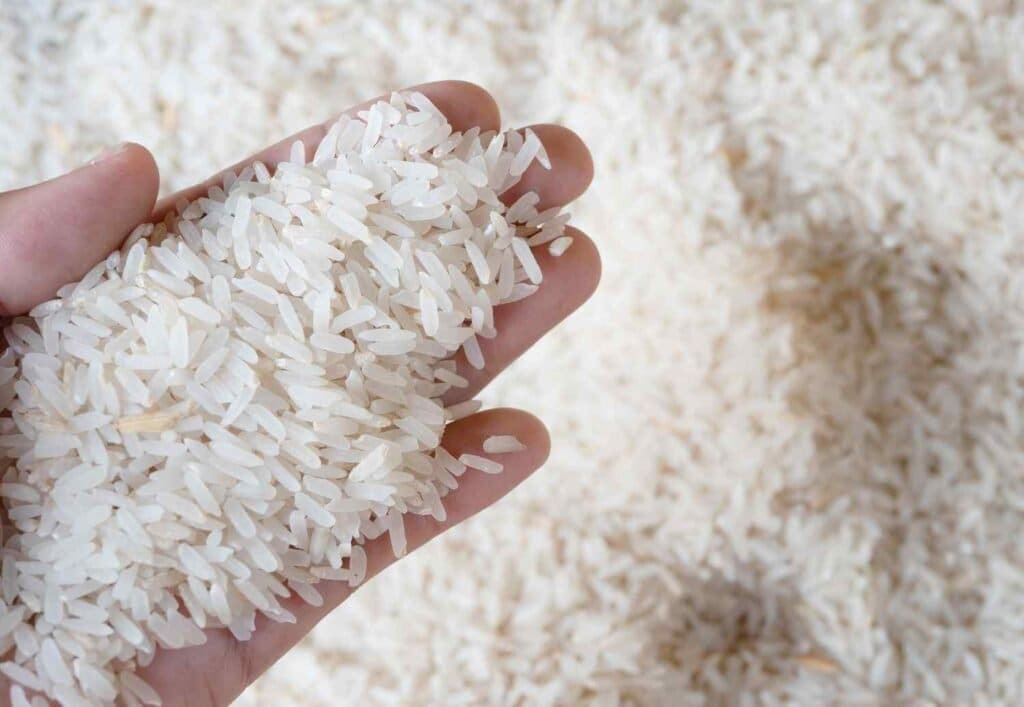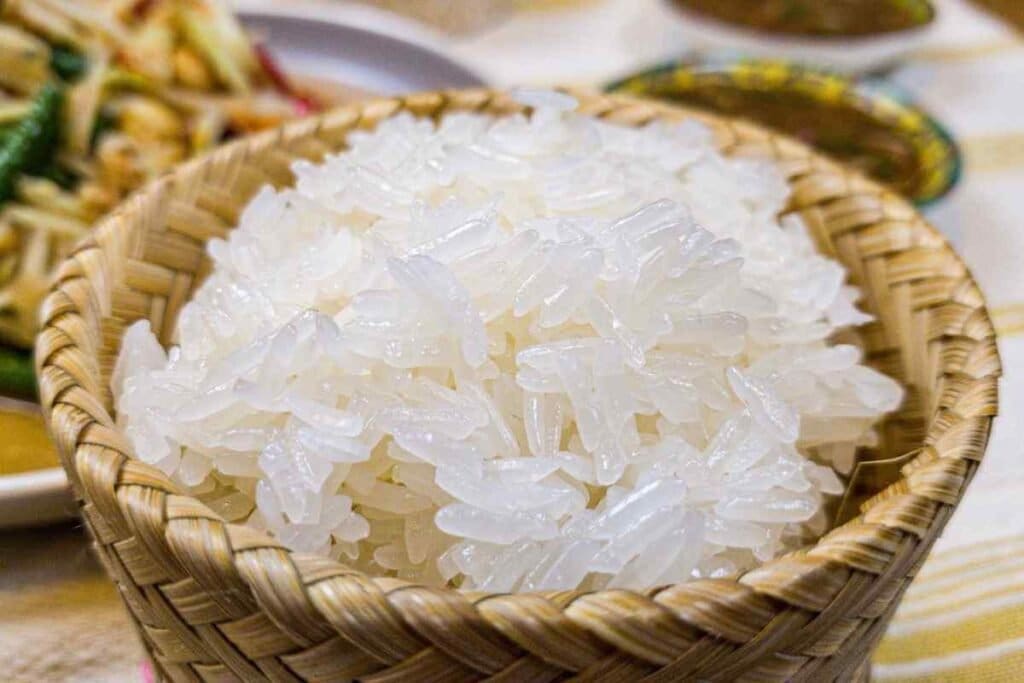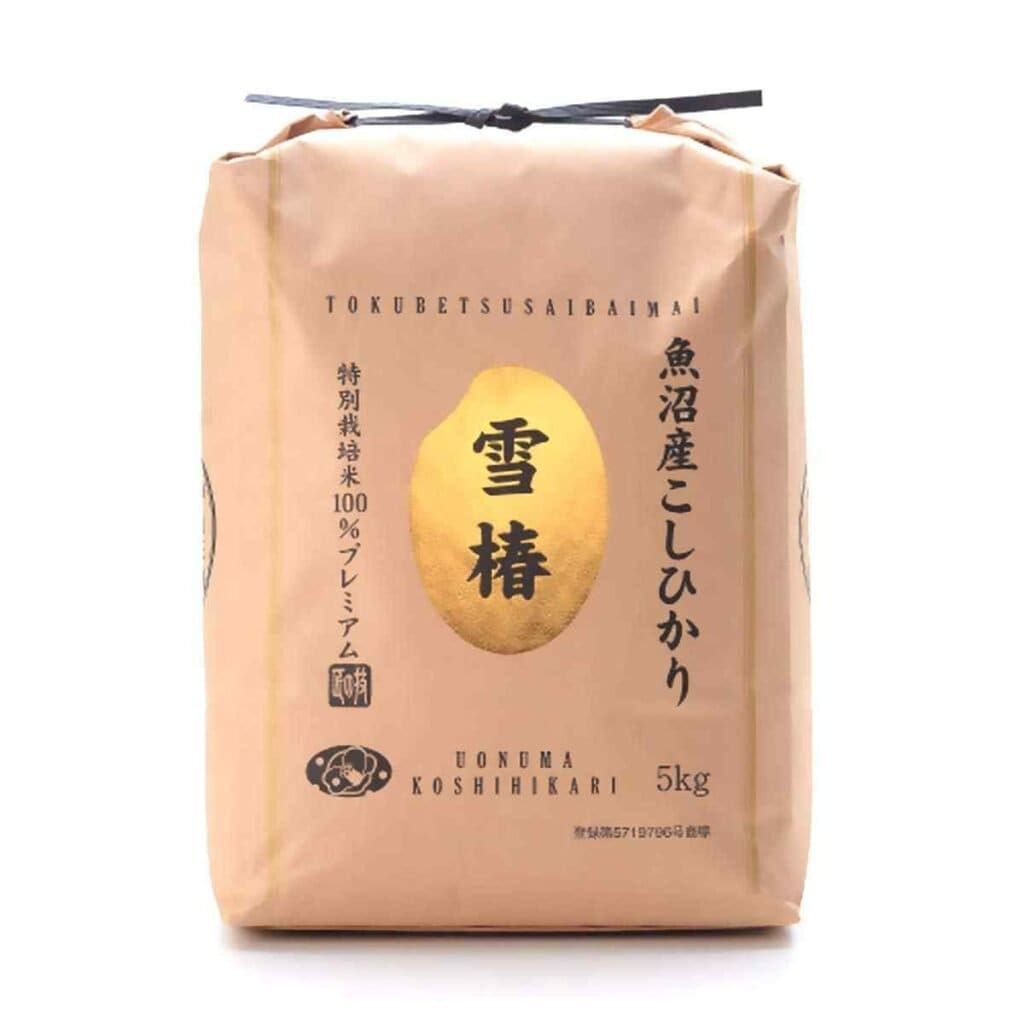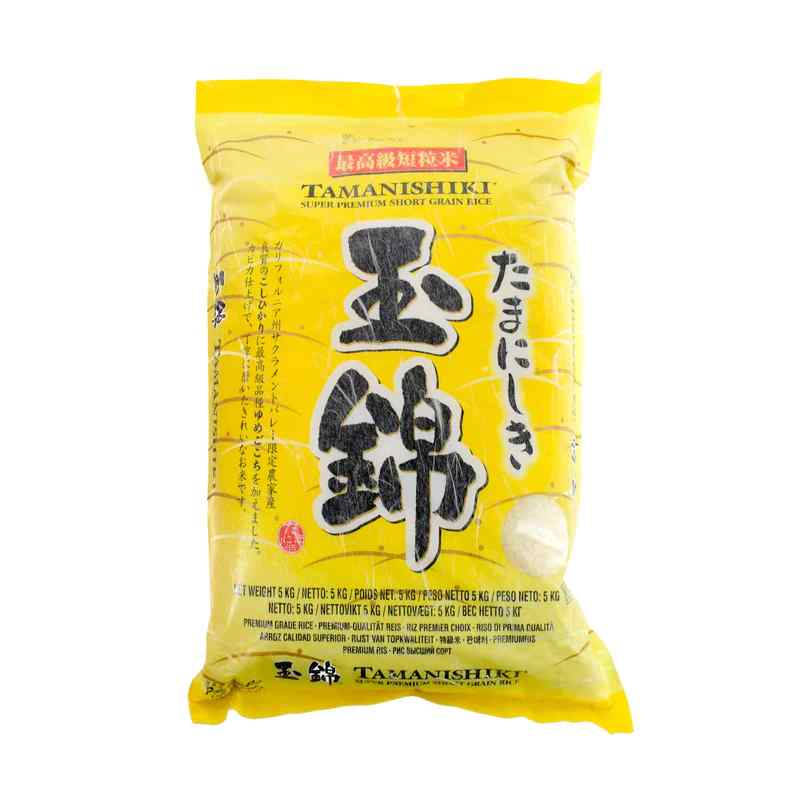Crafting the perfect rice ball is an art form, hinging on selecting the right type of rice. The ideal grain should clump together well, yet retain a delightful chewiness. We’ve rounded up the top five varieties and brands that promise to elevate your rice ball game.
Who knew the secret to upping your culinary skills could lie within a simple grain of rice? Let’s find out which rice makes the cut for those looking to impress at the dinner table.
5 Best Rice Types For Rice Balls
Selecting the ideal rice for your rice balls goes beyond flavor; it’s about the texture and how well the grains stick together. Japanese short-grain rice is the traditional choice for its sticky qualities, making sure your onigiri maintains its form and is easy to eat without utensils.
Yet, alternatives such as Calrose or Arborio rice shouldn’t be ignored, as they offer unique textures and tastes, expanding the conventional methods of preparing rice balls.
1. Japanese Short-Grain Rice

Why choose another variety when Japanese short-grain rice, with its unmatched sticky texture, is the perfect option for creating onigiri that easily maintain their shape and offer a delightful eating experience with your hands?
This rice type excels not only in cohesiveness but also in enhancing the subtle tastes and textures essential for genuine rice balls.
- Sticky Consistency: Ideal for shaping; it holds together well.
- Flavor Profile: Gentle and subtly sweet, it complements any filling beautifully.
- Cohesiveness: Keeps fillings securely enclosed, improving the taste experience.
- Texture: Provides a soft chewiness that’s unique compared to other rice varieties.
Grasping these details will transform your onigiri from just fine to extraordinary.
2. Sushi Rice

For a refreshing take on classic rice balls, sushi rice emerges as a distinctive choice. This Japanese short-grain rice, infused with a mix of vinegar, sugar, and salt, brings a subtly tangy flavor to your culinary creations.
The unique taste of this rice not only enriches your rice balls but also introduces an additional layer of complexity to even the most basic recipes.
| Aspect | Sushi Rice | Traditional Rice |
|---|---|---|
| Texture | Sticky | Very Sticky |
| Flavor | Tangy | Neutral |
| Use | Flavorful | Versatile |
| Prep | Infused | Plain |
Grasping the differences between sushi rice and traditional rice types is vital. The infused flavor profile of sushi rice provides an innovative option that could be the ideal twist your rice balls require.
Its preparation method and distinct taste distinguish it, making it a memorable selection for those aiming to make an impression.
3. Calrose Rice

Calrose rice, a medium-grain variant cherished across the United States, especially California, develops a sticky texture when cooked, making it perfect for making rice balls.
This variety’s ability to maintain its form, unlike others which may disintegrate or not stick well enough, ensures that your culinary projects keep their shape and look attractive.
- Versatile Texture: Achieves the right level of stickiness without becoming too soft.
- Flavor Profile: Mildly sweet, enhancing a variety of fillings.
- Cohesiveness: Keeps its form and integrity during handling.
- Accessibility: Easily found in grocery stores throughout the U.S.
For those aiming to achieve a fine balance of taste and texture in rice balls, Calrose rice stands out as the prime choice.
Its combination of stickiness and flavor promises a delightful experience, both during preparation and consumption.
4. Glutinous Rice (Sweet Rice)

Exploring the variety of sticky rice, glutinous rice, typically used for sweets and desserts, surprisingly serves as an excellent choice for creating chewier rice balls. Known also as sweet rice, it provides a unique texture that enhances the rice ball experience.
Its high starch content is the key to its remarkable stickiness, allowing for better adherence than most other rice types. Yet, careful preparation of glutinous rice is necessary; its tendency towards chewiness can be both an advantage and a disadvantage.
If overcooked, it may become too dense, upsetting the desired texture balance in perfect rice balls. When used with precision, however, glutinous rice adds a depth of texture, making your rice balls notably tender and memorable.
5. Italian Arborio Rice

Italian Arborio rice, primarily celebrated for its role in creamy risotto, also serves as an effective choice for creating sticky rice balls, thanks to its natural stickiness after cooking.
This texture, while distinct from the traditional Asian varieties used in rice balls, offers a unique taste experience that can enhance your culinary creations.
- Starch Content: Its high amylopectin content ensures the grains become sticky and clump together, making it perfect for rice balls.
- Cooking Process: It requires less water than long-grain varieties, leading to a denser, chewier texture.
- Flavor Profile: Its slightly nutty and rich taste adds complexity to your rice balls.
- Versatility: Beyond rice balls, its capacity to soak up flavors makes it suitable for a broad range of dishes, from savory to sweet.
5 Best Rice Brands For Rice Balls
Creating ideal rice balls requires choosing the best rice brand.
Koshihikari Rice from Uonuma, Japan, is highly recommended for its exceptional sweetness and texture, making it a favorite among experts.
Other brands like Nishiki and Tamaki Gold also provide excellent options for making rice balls, offering a good balance of stickiness and taste.
1. Koshihikari Rice from Uonuma, Japan

For those who cherish the art of making rice balls, the Koshihikari rice from Uonuma is a standout for its superior quality, marked by its unique sweetness, perfect level of stickiness, and flawless texture. Originating from Japan, this variety is often seen as the best choice for crafting exquisite rice balls.
Here are the reasons to consider it:
- Unique Sweetness: Enhances the taste of your rice balls.
- Perfect Stickiness: Keeps the shape of the rice balls intact without making them too sticky.
- Flawless Texture: Offers a pleasing chew that’s neither too firm nor too mushy.
- Purity of Flavor: Ensures the delicate flavors of other ingredients are prominent.
Opting for Uonuma’s Koshihikari rice means you’re not just preparing rice balls; you’re creating an exceptional culinary experience that stands apart.
2. Nishiki Premium Rice

Nishiki Premium Rice, celebrated for its medium-grain texture, becomes a superior selection for those passionate about making sushi and onigiri, offering a mix of dependability and excellence.
This brand distinguishes itself through its careful growing and processing practices, which guarantee that each grain perfectly balances stickiness with firmness – a crucial aspect for crafting the ideal rice ball.
Nishiki’s medium-grain rice is notable for a subtly sweeter taste and a texture that combines well without turning overly dense, positioning it as not merely an alternative but a preferred option for many.
Its flexibility in a variety of recipes, not limited to traditional Japanese cuisine, highlights its broad utility. Nonetheless, it’s critical to adhere closely to cooking guidelines to attain the best results, given its distinctive properties require careful handling.
3. Tamaki Gold Rice

Building on the strong foundation provided by Nishiki’s medium-grain rice, Tamaki Gold introduces a superior Koshihikari variety, cultivated in California, that enhances the craft of making rice balls with its exceptional adhesiveness and sophisticated taste.
This rice binds together seamlessly, ensuring your rice balls remain intact and full of flavor, even when filled with your preferred ingredients.
- Exceptional Adhesiveness: Perfect for creating cohesive and fulfilling rice balls.
- Sophisticated Taste: Improves the overall flavor of your rice balls, complementing other ingredients rather than dominating them.
- Cultivated in California: Provides a sustainable choice without sacrificing the genuine Koshihikari experience.
- Flexible Application: While ideal for rice balls, it’s equally suited for sushi, maximizing the culinary potential of each grain.
Tamaki Gold’s commitment to excellence in taste and quality places it as a prime selection for those passionate about their rice balls.
4. Lundberg Family Farms Organic Sushi Rice

Exploring the world of eco-friendly sushi rice, Lundberg Family Farms Organic Sushi Rice emerges as a stellar option for making rice balls. This choice is rooted in its unwavering commitment to organic farming practices and the exceptional quality of its rice.
Lundberg’s approach isn’t only about caring for the environment but also delivering rice with an unmatched texture and taste.
The rice is sufficiently sticky for forming balls, yet each grain retains a delightful chewiness, showcasing the careful cultivation and processing behind it.
For those who value the environmental impact of their food choices, this rice serves as a guilt-free foundation for culinary creations, marrying deliciousness with ecological care.
It’s important to note, though, that such high-quality often reflects in a higher cost, a direct result of the stringent organic farming standards.
5. Tamanishiki Super Premium Short Grain Rice

Tamanishiki Super Premium Short Grain Rice combines the exquisite qualities of Koshihikari and Yumegokochi rice, offering the perfect consistency and taste for making outstanding rice balls.
This brand is renowned for its meticulous focus on quality and texture, ensuring your rice balls are both tasteful and maintain their shape flawlessly.
- Exceptional Blend: Merges the finest aspects of Koshihikari and Yumegokochi rice.
- Ideal Consistency: Provides the perfect level of stickiness for rice balls to remain intact.
- Enhanced Taste: Amplifies the flavor of your rice balls, making them simply irresistible.
- Guaranteed Quality: High standards guarantee every batch is of premium quality.
Choosing Tamanishiki means transforming the simple act of making rice balls into a sophisticated culinary experience, with every bite reflecting a commitment to quality and flavor.



